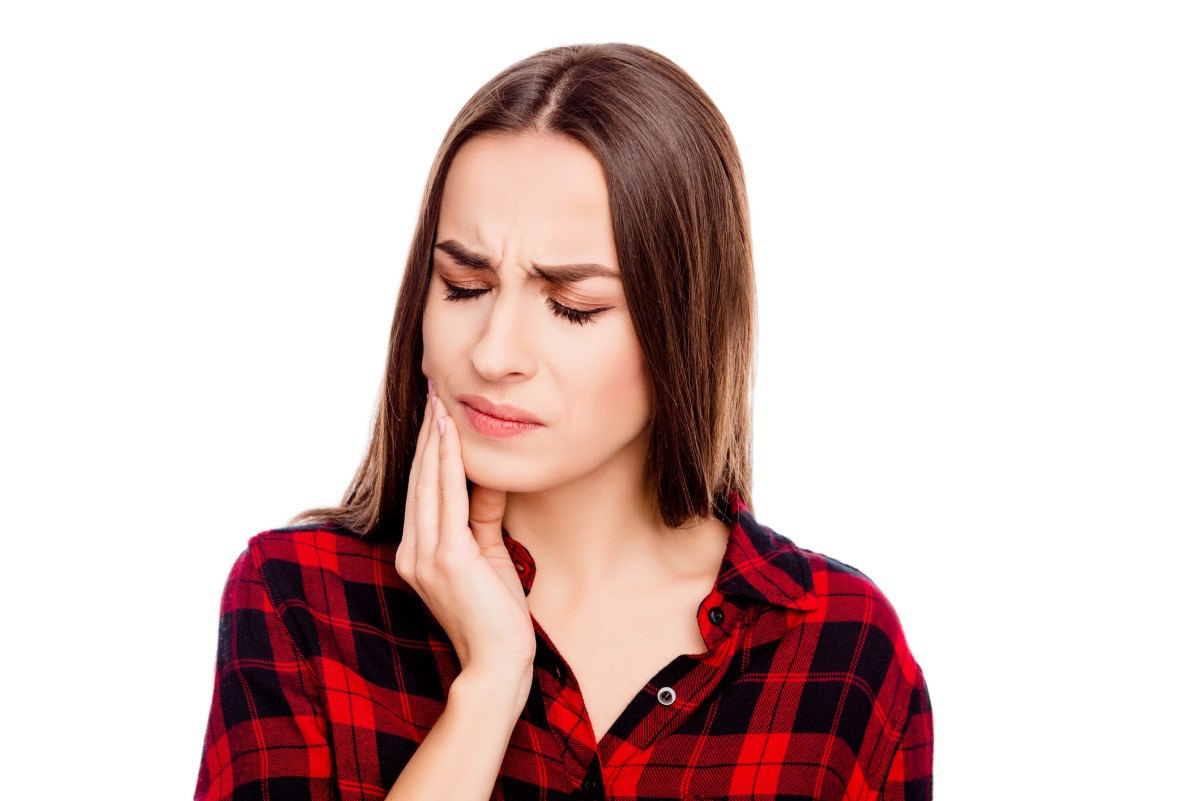- unipo.sk - NEURALGIA TRIGEMIN, Jakubíková H., Department of Neurology, J. A. Reiman University Hospital in Presov, Hasarová D., Department of Anaesthesiology and Intensive Care Medicine, J. A. Reiman University Hospital in Presov
- solen.cz - KRANIÁLNÍ NEURALGIE, doc. MUDr. Gerhard Waberžinek, CSc., Department of Neurology, Faculty of Medicine, Charles University in Hradec Králové
- ncbi.nlm.nih.gov - Herbal medicine for the management of idiopathic trigeminal neuralgia, Ji Hye Hwang, PhD, KMD, Department of Acupuncture and Moxibustion Medicine, College of Korean Medicine, Gachon University, Seongnam, Jaseung Ku, PhD, KMD, Bogwang Korean Medical Clinic, Seoul, Republic of Korea
Painful inflammation of the trigeminal nerve and its treatment.

Facial pain has been bothering people since ancient times. Do you also suffer from frequent and persistent facial pain that suddenly appears and disappears again?
Article content
Facial pain has plagued people since ancient times, with the first medical description of the condition dating back to the 17th century AD. It is therefore not a modern-day syndrome or a disease that only professional drivers suffer from.
Do you also suffer from frequent and persistent pain in certain parts of your face, which suddenly appears and disappears? You may tend to attribute it to draughts from an open car window. You should check whether you are suffering from trigeminal neuralgia, which could be a serious neurological problem.
Starring...
The trigeminal nerve, or V cranial nerve.
All of these names name the strongest nerve of the twelve nerves coming directly from the brain.
The trigeminal nerve originates in the brainstem. It has sensory and motor branches.
The sensory branch (perceptual sensitivity) innervates the entire face, the palate of the mouth, the front 2/3 of the tongue, all the teeth, the nasal cavity, the orbit (the cavity in which the eyeball is located), part of the earlobe, and also the dura mater, which is the covering of the brain.
It motorically innervates the 3 muscles of mastication and some muscles of the floor of the mouth.
Today's modern name, trigeminal neuralgia, also popularly called trigeminal neuritis, refers to a disease manifested by intense, paroxysmal pain.
The pain is:
- superficial
- sharp
- burning
- throbbing
- recurrent
Affected are the so-called innervation areas of the nerve. These are the parts of the face that are innervated by the trigeminal nerve.

The pain can arise spontaneously, but is more often triggered by painless stimuli such as talking, chewing, a breath of cold wind or a light touch in the area of the so-called trigger points. These are located around the nose and lips or on the mucous membrane of the oral cavity.
The pain is often sudden and shocking. Patients describe it as an electric shock, but it can also gradually increase until it becomes unbearable.
The attack lasts approximately 10 to 60 seconds.
As a rule, it occurs only on one half of the face. After the attack, burning sensations may persist in the affected area.
The frequency of these 'outbursts' can range from a few per month to several per day. In the most severe cases, there is an accumulation of shorter attacks that follow each other closely, forming a so-called status neuralgicus.
Trigeminal neuralgia is divided into essential and secondary.
Essential or primary trigeminal neuralgia has no known cause.
On examination, the doctor will not find any impairment of facial sensitivity.
Secondary trigeminal neuralgia is associated with another disease that affects the sensory root of the trigeminal nerve.
This may include brain tumours, cysts, demyelinating lesions in multiple sclerosis, vascular atypia and bulging blood vessels (aneurysms), trauma or neuroinfection.
In some cases, neuralgia may also be caused by a conflict between a nerve and a blood vessel that abuts the nerve and irritates it. Exceptionally, skull deformities may be the cause.
Postherpetic neuralgia
If the pain occurs several weeks or months after a herpes zoster infection, it is called postherpetic neuralgia.
It is one of the most common complications of this infection. It affects 1 in 10 patients with acute herpes zoster.
The first branch of the nerve that innervates the eye is most often affected, hence the name herpes zoster ophtalmicus.
Patients with diabetes mellitus (diabetes), immunodeficiency conditions, cancer and those treated with corticosteroids, which suppress the body's immune response, are most at risk.
In the prevention of postherpetic neuralgia, it is important not to underestimate the proper treatment of the underlying herpes zoster disease with antivirals such as acyclovir.
If the pain persists, it is necessary to see a specialist
The most important part of a successful diagnosis of trigeminal neuralgia is a detailed specialist examination by a physician, most often a neurologist.
The doctor will ask you about the circumstances of the pain, the location, intensity, type of pain (stabbing, dull, electric, etc.), radiation, duration of pain, triggering factors, associated symptoms (burning, itching, loss of sensation, nausea, etc.).
Assessment of mood, sleep quality, limitations in personal and professional life are also important.
Modern imaging methods are very helpful in determining the type of neuralgia (primary or secondary). These include computed tomography (CT), magnetic resonance imaging (MRI) and magnetic resonance angiography (MRA).
If left untreated, neuralgia can cause complete inability to perform daily activities.
Pain attacks can be so bothersome that the patient stops washing his face, shaving, performing oral hygiene, talking or eating in an attempt to avoid them.
Many patients develop depression from chronic severe pain.
Early treatment of neuralgia is available and effective
The good news is that modern medicine offers several treatment options.
When choosing the right therapy, the doctor should take into account several important facts. The intensity of the pain itself is crucial, on which the radicality of the treatment will depend.
The age and general physical condition of the patient, possible risks and the effectiveness of previous treatment or its failure are also decisive.
In most patients with essential trigeminal neuralgia, pharmacotherapy, i.e. the use of drugs, is effective.
However, commonly available analgesics do not have sufficient effect. Therefore, it is necessary to reach for drugs that have a different mechanism of action.
For appropriate therapy of neuralgia, drugs from the group of anticonvulsants (anti-seizure drugs) are used. They suppress abnormal discharges in the affected nerves. Among anticonvulsants, carbamazepine, phenytoin and clonazepam are mainly used. Gabapentin, lamotrigine and topiramate have excellent effects.
The second group of drugs are antidepressants. They act on noradrenaline and serotonin, substances involved in the transmission of pain.
Another option is the use of the antiarrhythmic drug mexiletine, which reduces the spontaneous discharges in the nerves that cause lightning-type pain. Before starting treatment with this drug, a cardiologist should be consulted.
Some patients do not get sufficient relief from painkillers or their effectiveness drops to zero after a certain period of time. In this case, a more radical treatment is considered, which is an invasive surgical solution.
In the past, peripheral blockades with alcohol, phenol and glycerol were used for minor procedures.
Nowadays, minor interventions such as injecting a small amount of alcohol into the nerve, severing the sensory fiber, inserting a Teflon plate, part of the muscle or fascia between the nerve and the conflicting vessel, and others are preferred.
Currently, radiosurgery with a gamma knife and linear accelerator is gaining popularity. This type of therapy uses radioactive radiation arranged in a very thin beam.
It is most commonly used to irradiate tumours and metastases in cancer. The beam of gamma radiation or linear accelerator is very thin and precise. It is therefore suitable for irradiating small targets in very sensitive organs such as the brain.
The target of irradiation in neuralgia is the point of entry of the trigeminal nerve into the brainstem.
This method has a high success rate of up to 80%.
As a supportive treatment to a properly prescribed therapy, you can include some methodologies known from East Asian traditional medicine.
Good results have been achieved by patients with acupuncture, electroacupuncture, pharmacopuncture and herbs.
In the home environment, the application of heat to the affected part of the face can bring relief. A biolamp with red light, warm compresses from an ironed towel or blow-drying have proved successful.
Home treatment should be preferred for primary trigeminal neuralgia. These are cases where no cause or organic disease causing the pain is identified.
When the face hurts from another cause
In addition, the pain may be caused by another problem.
Neuralgia of the glossopharyngeus nerve
The nerve glossopharyngeus or lingual pharyngeal nerve is the IXth cranial nerve.
It innervates the anterior third of the tongue, palate, middle ear, pharynx and tonsils.
Neuralgia of the n. glossopharyngeus is a rare disease. It occurs about 100 times less frequently than neuralgia of the trigeminus.
There is a division between primary neuralgia (neuralgia from unknown causes) and secondary neuralgia. Secondary neuralgia can be caused by pressure from a brain tumor on this nerve or pressure from a running blood vessel.
The pain is very severe. It affects the tongue, tonsils and ear, usually on one side of the face.
Pain is caused by eating, speaking, chewing or possibly sneezing. In an attack of neuralgia, the ear may become very red.
This symptom is called red ear syndrome.
Treatment is similar to trigeminal neuralgia. In more severe cases, neurosurgery, called microvascular decompression, is used.
Neuralgia nervus intermedius
The nervus intermedius is a thinner part of the cranial nerve called the nervus facialis or facial nerve.
It is the VIIth cranial nerve.
The nervus intermedius innervates part of the earlobe and the back of the external ear. Neuralgia is very rare.
The pain lasts for a few seconds to minutes. It is localized unilaterally to the back of the outer ear. Typically, neuralgia manifests itself after overcoming a herpes zoster viral infection that has affected the ear area.
It is also called Ramsay-Hunt syndrome or herpes zoster oticum.

Temporomandibular joint syndrome (myofascial algic syndrome)
There are two views of this disease.
According to the first, it belongs to tension headaches. The second group of experts classifies it as a neuralgia.
It also has different names, such as temporomandibular joint syndrome, oromandibular dysfunction, Costen's syndrome, cranio-mandibular dysfunction or temporo-mandibular joint pain.
The pain is very similar to atypical facial pain but is triggered by talking, chewing or lateral displacement of the temple against the jaw.
At least three of these symptoms must be present for a correct diagnosis of this condition:
- A rustling and rubbing sound, known as a grinding noise, is heard when chewing.
- Lateral movement of the jaw is severely restricted
- Opening the mouth causes pain
- The mouth cannot be opened to the full extent of the joint
- Biting of the tongue or lips often occurs
Treatment belongs in the hands of a dentist.
The disease is often caused by night-time grinding of the teeth, called bruxism. Some people experience excessive clenching of the teeth in stressful situations.
Often the person is not aware of either of these habits and does them unconsciously. They cause unnatural overloading of the jaw joint, stiffening of the surrounding muscles and the development of muscle spasms that can even be felt as small balls in the depths of the cheek.
A dentist may indicate custom-made dental splints to prevent teeth grinding and clenching during the night. Among other treatments, relaxation exercises or injections of anesthetic into painful trigger points during muscle spasms are recommended. Among medications, classic non-steroidal antiphlogistic drugs and analgesics are used.
Atypical facial pain
In this case, it is a very strong and intense pain in the face, which manifests itself in the same locality as in trigeminal neuralgia.
The difference with trigeminal neuralgia is that the pain is more deep than superficial. The patient cannot clearly identify the affected area. Atypical pain often affects the chin and the corner of the mouth.
The duration of individual attacks is longer than in neuralgia.
In some cases, it is a continuous pain with no rest period in between.
Women are most often affected.
On examination, the physician finds no deficit. Only touch pain in the face is evident.
The treatment is very difficult and long term. Antidepressants have proved effective in practice.
Interesting resources










